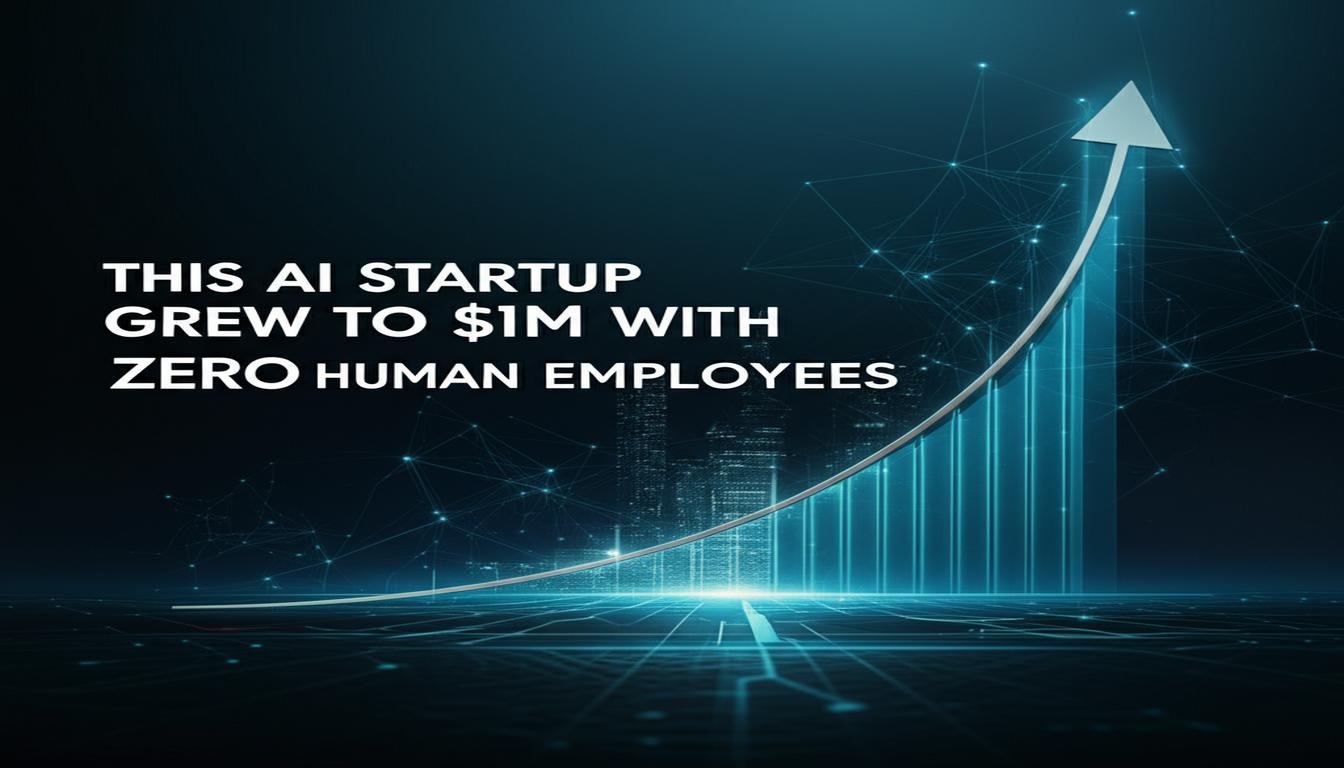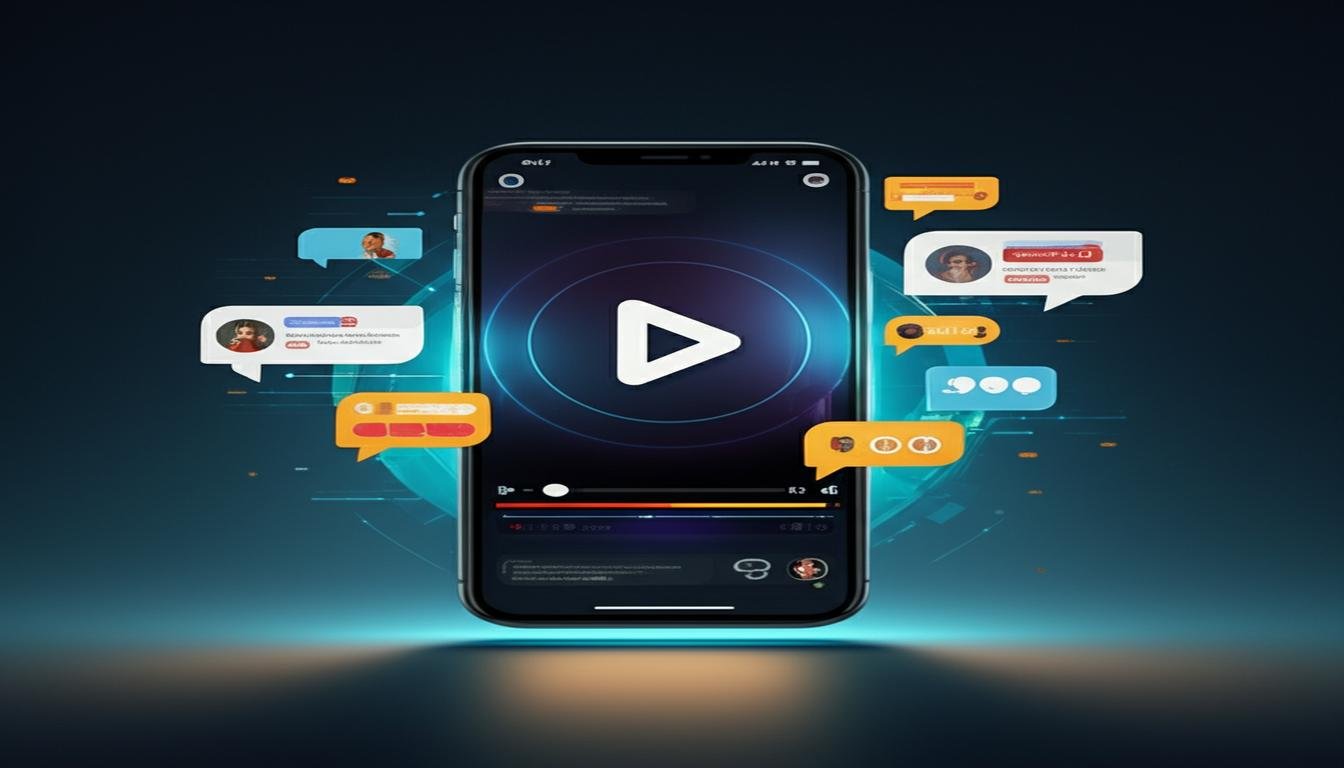Imagine this: an innovative tech company, buzzing with activity, generating significant revenue, yet its employee roster shows a grand total of zero. No, this isn’t a scene from a sci-fi movie; it’s the intriguing reality for a growing number of AI startups. We’re talking about an AI-driven venture that recently hit the impressive milestone of $1 million in revenue without a single human on its payroll. Sound like magic? Let’s pull back the curtain. What Does “Zero Human Employees” Even Mean? First off, let’s clarify. When we say “zero human employees,” we’re not implying some phantom, sentient AI built itself from scratch. That’s still firmly in the realm of science fiction. Instead, this refers to businesses where all day-to-day operational tasks – from product development and customer support to marketing and sales – are handled entirely by automated systems and artificial intelligence. Think of it as the ultimate lean startup. The original vision, the initial code, and the grand architecture were, of course, human-designed. But once launched, the machine took over. This isn’t just about simple automation; it’s about sophisticated AI systems making decisions, learning, and evolving without direct human intervention in the operational loop. The Blueprint: How They Did It So, how does an AI startup achieve such a feat? It boils down to a clever combination of niche identification, advanced automation, and smart integration. 1. Identify a Niche Ripe for Automation The key isn’t to automate everything, but to find a specific market need that can be perfectly met by algorithms. Consider services that are: Highly repetitive. Data-intensive. Rule-based or pattern-driven. Require fast, scalable execution. Examples might include generating personalized content at scale, automating complex data analysis, or running highly targeted ad campaigns based on real-time market shifts. 2. Build an Autonomous Core At the heart of such a startup is a robust AI system capable of performing the core service. This could be: A generative AI creating unique marketing copy or design assets. An analytical AI providing deep market insights. A sophisticated chatbot handling customer inquiries and even sales. This core system is designed to be self-sufficient, meaning it can execute its tasks, collect feedback, and even make adjustments to its approach based on predefined metrics. 3. Leverage Existing AI Tools & APIs No need to reinvent the wheel. These startups often integrate powerful, off-the-shelf AI services and APIs (Application Programming Interfaces). Imagine using a leading language model for text generation, a vision AI for image processing, or a cloud platform’s machine learning services for data prediction. By stitching these components together, they create a custom solution without needing to build every AI capability from scratch. 4. Automated Marketing & Sales Getting customers is usually a human-heavy task, right? Not here. These companies deploy AI-powered tools for: Automated content creation for blogs and social media. AI-driven ad buying and optimization. Chatbots and virtual assistants for lead qualification and sales outreach. Automated email marketing campaigns tailored by AI. The entire customer acquisition funnel, from initial awareness to conversion, can be orchestrated by algorithms. 5. Self-Healing Systems & Monitoring What happens when something breaks? An AI startup designed for autonomy also builds in monitoring and self-correction mechanisms. This could involve AI-driven dashboards alerting “on-call” human specialists (who aren’t employees in the traditional sense, but external contractors for emergencies) or even automated scripts that attempt to resolve common issues independently. Behind the Scenes: The “Human” Touch (Before Launch) It’s crucial to remember that while the day-to-day operations are automated, significant human ingenuity went into setting up the system initially. Before achieving its $1M milestone, a small team or even a single founder poured countless hours into: The Initial Vision: Defining the problem and the AI solution. Coding & Development: Building the core algorithms and integrating various components. Training Data: Curating and refining the vast datasets necessary for the AI to learn. Parameter Setting: Establishing the rules, goals, and ethical boundaries for the AI’s operation. Testing & Refinement: Rigorously testing the system and iterating on its performance. So, while there are no ongoing human employees, the initial human spark and continuous, albeit minimal, human oversight are what make these ventures possible and profitable. Challenges and Considerations Operating a zero-human-employee company isn’t without its hurdles: Edge Cases: AI can struggle with truly novel or unexpected situations that fall outside its training data. Ethical Dilemmas: Automated decision-making requires careful ethical programming and monitoring. Dependence on External Services: If a third-party API changes or goes down, it can impact the entire operation. Lack of Intuition: Humans bring empathy, creativity, and intuition that even the most advanced AI can’t fully replicate. What This Means for the Future of Business The rise of the zero-human-employee AI startup is more than just a novelty; it signals a significant shift in how businesses can be conceived and scaled. It highlights: Unprecedented Efficiency: Drastically reduced overheads mean higher profit margins. Global Scalability: An automated system can operate 24/7 across borders without needing new hires. Focus Shift: Future human roles might lean more towards designing, overseeing, and innovating these automated systems, rather than performing the tasks themselves. Could Your Idea Benefit from This Automation? This $1M AI startup story isn’t just about a unique business model; it’s a powerful demonstration of what’s possible with today’s technology. It encourages us to rethink traditional business structures and consider how smart automation and AI can empower ventures to achieve incredible growth with minimal human operational costs. If you’re an entrepreneur or thinking about launching a new project, ask yourself: what aspects of my business could be fully automated? What repetitive tasks could an AI handle, freeing up resources and accelerating growth? The answer might just be your blueprint for the next big thing, proving that sometimes, less human involvement in daily operations can lead to more impactful, profitable outcomes.
This AI Startup Grew to $1M With Zero Human Employees









